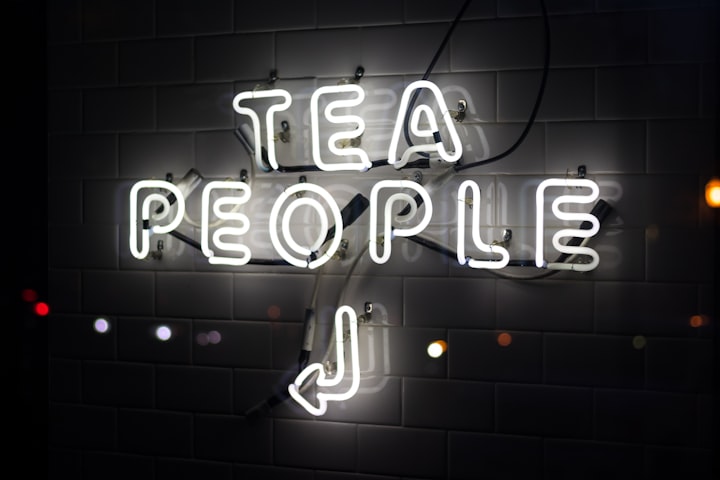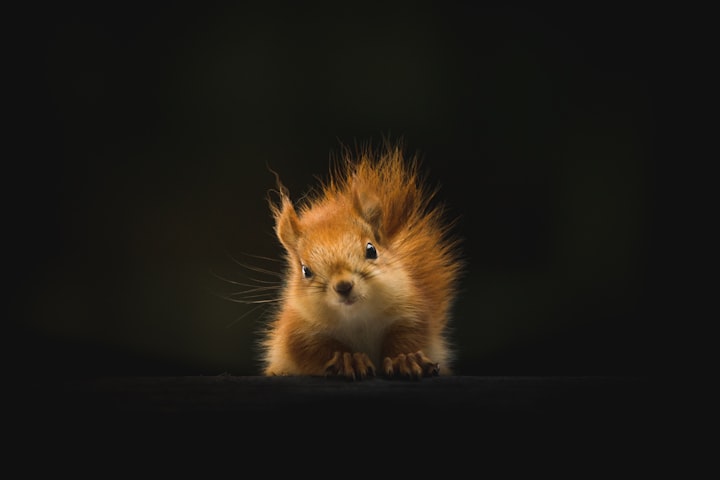Linguistic characteristics of Indian English
Arun Kumar Ph.D.

Indian English is a collective phrase for the dialects or varieties of English spoken widely in India. Variations in the pronunciation of several phonemes are affected by the regional tongues across India, the greatest distinction being that between South India and North India. Several idiomatic forms from Indian languages have made their way into the English of the masses. Despite India’s diversity, however, there is indeed a general homogeneity in syntax and vocabulary that can be found among speakers across India. The form of English that Indians are taught in schools is essentially British English. However, the influence of American English, due to the burgeoning influence of American pop culture on the rest of the world, has begun challenging traditional British English as the premier brand of English spoken in India, though this is largely limited to the youth in the last three decades (CIIL website).
English has been in India since the early 1600’s, when the East India Company started trading and English missionaries became active in Indian society. Many Christian schools imparting an English education were set up by the early 1800’s (Kachru 1983). English became the official and academic language of India by the early twentieth century. English now has national and international functions that are both distinct and complementary. English has thus acquired a “new power base and a new elitism” in India (Kachru 1986). English speaking elite lead India’s economic, industrial, professional, political, and social life. Even though English is primarily a second language for these persons, it is the medium in which a great number of the interactions in the above domains are carried out.
Standard English in India is prized and found plentiful among educated circles as well as literary and technical Indian writing in English. Upper and middle-class Indians, especially those with greater exposure to the West tend to speak more grammatically standard English. However, despite the great stress on good English in higher circles, the layman’s spoken variety of Indian English is wide-spread and well-known for its many eccentricities.
Indian accents vary greatly from those leaning more towards a British to those leaning more towards a native language-tinted speech. The most ubiquitous instance of modified sounds is the morphing of alveolar English ‘d’, ‘t’ and ‘r’ sounds to more retroflex variants. South Indians tend to curl the tongue more for ‘l’ and ‘n’ sounds, while Bengalis often substitute ‘j’ for ‘z’ (as in ‘jero’ instead of ‘zero’). And Sindhis have the habit of changing ‘w’ sounds to ‘v’ (as in ‘ven’ instead of ‘when’).
The distinct evolution of regional variations in contemporary usage has led to terms such as Hinglish (Hindi + English). These terminologies are often referred to in a humorous way, with each region or stratum of society having fun at the expense of others. Hinglish is particularly capitalized and made popular in the field of advertising. There are thus many borrowed words from Indian languages that find their way into popular English writing, advertisements, newspapers, television commercials and shows.
Hinglish is the arbitrary usage of Hindi and English, combining both, in one sentence, for example, “ma, aaj main university nahin jaunga” (mother, I am not going to university today). This is more commonly seen in urban and semi-urban centers of population but is slowly spreading its root into rural and remote areas via F.M radio, television and word of mouth, slowly achieving vernacular status. This highly popular mixing of both the languages in most parts of northern and central India has grown from the fact that English is a popular language of choice amongst the urbane youth who finds itself comfortable in its lexicon. It is already the medium for imparting education in many schools across India. Cable television and its growth has seen the masses exposed to a wide variety of programming from across the world. Most people do not even recognize how frequently they use English words in their conversation.
According to Crystal (2004), Hinglish will soon become the most spoken form of English in the world. He says that about a third of Indian population already speaks it, and their percentage is rising. With the Internet spreading English like no other tool ever, and Indians at the forefront of the IT revolution, Hinglish has the capacity to reach around the globe and take over from British and American forms.
John M. Lawler of the University of Michigan observes the following anomalies in the grammar of Indian English (Wikipedia website): The progressive tense in static verbs: I am understanding it. She is knowing the answer. Variations in noun number and determiners: He performed many charities. She loves to pull your legs. Prepositions: pay attention on, discuss about, convey him my greetings. Tag questions: You're going, isn't it? He's here, no? Word order: Who you have come for? They're late always. My all friends are waiting. Yes and no agreeing to the form of a question, not just its content - A: You didn't come on the bus? B: Yes, I didn't.
In addition to Lawler’s observations, other unique patterns are also standard and will frequently be encountered in Indian English. Use of the words “but” or “only” as intensifiers such as in “I was just joking but.” or “It was she only who cooked this rice.” Idiomatic English for quantification in use of preposition “of”, as in “There is so much of happiness in being honest” (Baldridge, 2002). “Theek hai” or “Theek acchha” (th being heavily aspirated and retroflex) meaning “Okay”, “alright”, “great”, “fine”, or “sure”. Casual use of words yaar (friend, buddy, dude, man), bhai (brother) as in “Arey! C'mon, yaar! Don't be so foolish”, “Long time no see, bhai”. Use of interjections “Arey!” and “acchha!” to express a wide range of emotions, usually positive though occasionally not, as in “Arey! What a good job you did!”, “Accha, so that's your plan.” or “Arey, what bad luck, yaar!” Use of “oof” to show distress or frustration, as in “Oof! The baby's crying again!” Use of “Waah” to express admiration, especially in musical settings, as in “Waah! Waah! You play violin so well!”
There are large number of English words that have their origin in Indian languages (see appendix I). Words unique in India include batchmate or batch-mate (Not classmate, but of a schoolmate of the same grade); brinjal (eggplant); chai (Indian tea); cousin-brother (male first cousin) and cousin-sister (female first cousin); Crore (ten million); eve teasing (harassment of women); foot overbridge (bridge meant for pedestrians); godown (warehouse); Himalayan blunder (grave mistake); Lakh (hundred thousand); masaala (spice, excitement); masti (naughtiness, fun, excitement); nose-screw (woman's nose ornament); opticals (eyeglasses); prepone (the opposite of 'postpone'); pukka (excellent, whole, perfect); would-be (fiancé/fiancée).
Indian English is a distinct variety of the English language. Its speech operates on various phonological, morphological, lexical, and syntactic levels. Baldridge (2002) experimented to see if the English alveolar /t/ would be articulated as the Indian retroflex /t/ or as the dental /t/ in different phonological environments. He found that the retroflex completely replaced the alveolar. It has been found that the entire series of English alveolar consonants tends to be replaced by retroflex consonants (Trudgill and Hannah 1994). They also found that some Indian English speakers tended to drop the -ed ending after /k/ and /t/. For example, walked became walk and talked became talk. Sometimes ‘a’ was used in front of vowel-initial words before which other English speakers would use ‘an’.
Trudgill and Hannah (1994) observed that Indian English tended to have a reduced vowel system; /r/ tends to become a flap or retroflex flap; the consonants /p/, /t/, and /k/ tend to be unaspirated; and in some regions, /v/ and /w/ are not distinguished (volleyball is the same as wallyball).
Indian English morphology is very creative and is filled with new terms and usages. It uses compound formation extensively, as in “English-speaking” people or “convent-going” students. The compounds “cousin-brother” and “cousin-sister” allow the Indian English speaker to designate whether their cousin is male or female - a function that is inherent in the terminology of most Indian languages. Others include “chalk-piece”, “key-bunch”, “meeting-notice”, “age-barred”, and “pin-drop silence”. Indians also pluralize many English mass nouns and end up with words such as litters, furnitures, and woods (Trudgill & Hannah, 1994). Sometimes words, which should be pluralized are not; for example, “One of my relative”. A quintessential Indian English term, which comes from compound formation, is time-pass. It denotes something as non-exciting; for example, “That movie was real time-pass.” It can also indicate the act of passing time without a specific purpose or motivation (Baldridge, 2002).
The Indian English lexicon has many distinct terms, which are commonly used by its speakers. Some arise using old and new morphological features while others come from acronyms and abbreviations. Many terms from Indian languages are utilized, and new usages for English words or expressions are created. It must be noted that many of these terms and usages are specific to the population of Indian English speakers who are currently between twenty and thirty years of age (Baldridge, 2002). Examples of the use of acronyms include the following:
MCP = Male Chauvinist Pig
FOC = Free of Charge
ILU = I Love You (from a song; pronounced ee-lu)
ABCD = American Born Confused Desi (native of India)
FOB = Fresh Off the Boat
PIO = Person of Indian Origin
NRI = Non-Resident Indian
FOB is used by North American-born Indians against India-born Indians, who immigrated to America recently. On the other hand, India-born Indians tease America-born Indians for being too Americanized or ABCDs. Other acronyms stem from entire Hindi sentences. What is interesting about Indian English abbreviations is that they are pronounced the way they are spelled after they have been shortened.
Hindi syntax affects Indian English syntax in several ways. There is a seemingly arbitrary use of the articles ‘a’ and ‘the’, which do not have parallels in Hindi. ‘The’ and ‘a’ are dropped when they should be used and often used when they should be left out. It is not uncommon to hear something like, "We are going to temple”. Use of “only” and “itself” to emphasize time and place is also typically Indian English. It comes from the Hindi word “hi” and produces sentences like “I was in Toronto only” and “Can we meet tomorrow itself?” Indian English speakers often use duplication as a way of emphasizing an action; for example, “Come come! Sit sit!”. Duplication can also replace “very” for intensifying or extending something, as in “hot, hot water” and “long, long hair”. Such usage is common in spoken Hindi.
The word order of questions is often unique in Indian English. Sentences such as “What you would like to eat?” and “Who you will come with?” show the absence of subject-verb inversion in direct questions. Another aspect of grammar that is often inconsistent is the use of also; for example, “We never even used Hindi word also.”
Indian English is a recognized form of English, just like British English or Australian English or Standard American. It has a lot of distinctive pronunciations, some distinctive syntax, and quite a bit of lexical variation. Its speech operates on various phonological, morphological, lexical, and syntactic levels. Indian English has distinct grammar and syntax that is influenced by various Indian languages. Indians have developed English into their own native language with its own linguistic and socio-cultural contexts.
References
Baldridge, J. 2002. Linguistic and Social Characteristics of Indian English. Language In India; volume 2: 4 June-July 2002. CIIL Website (http://www. Ciil.org/languages/Indian.html)
Crystal, D. (1997). The Cambridge Encyclopedia of Language. Cambridge University Press.
Crystal, D. 2004. The World’ll speak in Hinglish. The Timese of India Online, October 11, 2004. (http://timesofIndia.indiatimes.com/articleshow/msid-880272,prtpage- 1.cms)
Kachru, Braj. (1983). The Indianization of English. Oxford: Oxford University Press.
Kachru, Braj. (1986). The Alchemy of English: The spread, functions and models of non-native Englishes. New York: Pergamon Press Inc.
Pandey, D.P. & Sharma, V.P. (1993). English-Hindi Dictionary. New Delhi: Harper Collins Publishers.
Trudgill, P. & Hannah, J. (1994). International English: A Guide to the Varieties of Standard English. London: Edward Arnold.
Wikipedia Website "http://en.wikipedia.org/wiki/Indian_English
Appendix
List of English words of Hindi origin
Bangle (an ornament worn by ladies in their hands. Bangles are made of glass, gold, silver, aluminiuim, wood, ivory etc.); Bandana; Bindi; Bungalow (a single storey house); Cashmere (original Kashmiri (things belongs to Kashmir) like wool or saffron); Cheetah; Chaddis (underpants); Chai (Tea made with spices, commonly cardamon); Chakra; Choli (A tight fitting bodice which is usually worn with a skirt (lengha) or a sari. Choli comes in two varities - backless and back covered. Backless choli is one of the hottest fashion statements going around. It can even be worn with jeans or miniskirt); Coolie; Cot; Cummerbund (a waist band), Cushy; Dhoti; Dinghy;Doosra; Dungaree. Elaichi (cardamom); Ghee (Oil made by melting butter); Gunny (A coarse heavy fabric made of jute or hemp, usually used for making sacks), Gymkhana (Gym); Jodhpur (tight-fitting trousers, usually for horse riding); Jungle; Junta (the public); Kedgeree; Khaki; Loot; Mang; Pukka (genuine); Punch (the drink); Purdah; Pyjamas; Sari; Shampoo; shawl and Thug.
List of English words of Sanskrit origin
Aryan; Avatar; Axis; Bandana; Cashmere; Candy (from "khanda" via Arabic's "qandi" ); Chakra; Cheetah; Dharma; Guru; Himalayas (mountain range) Juggernaut (a large moving object); Jute; Kamasutra; Karma; Loot; Mandala; Mongoose; Musk; Nirvana; Orange (from "na rangi"); Palanquin; Punch (the drink); Pundit (a scholarly critic); Raj; Sati; Shunyata; Sugar; Sutra; Swami; Swastika; Yoga; Yoni
About the Creator
Arun Kumar Ph. D.
I am a semi-retired geologist, presently affiliated with Carleton University, Ottawa, Canada. During my almost five decades long career I worked around the world. Now I live in Ottawa, the beautiful capital city of Canada.





Comments
There are no comments for this story
Be the first to respond and start the conversation.